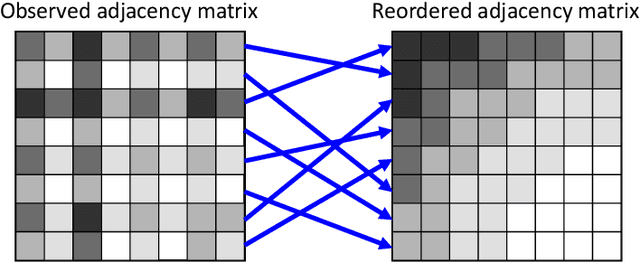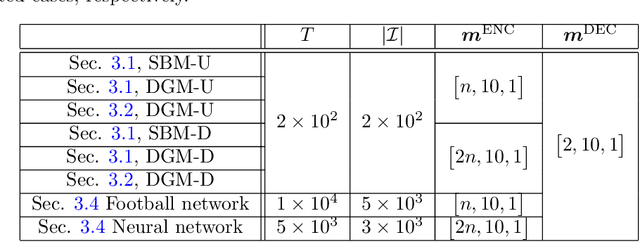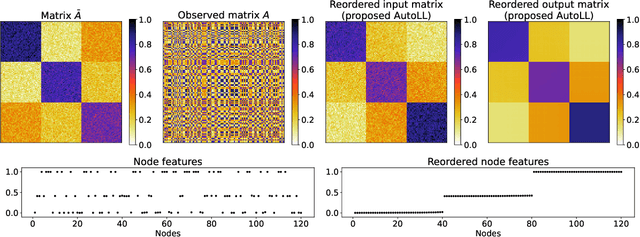AutoLL: Automatic Linear Layout of Graphs based on Deep Neural Network
Paper and Code
Aug 05, 2021



Linear layouts are a graph visualization method that can be used to capture an entry pattern in an adjacency matrix of a given graph. By reordering the node indices of the original adjacency matrix, linear layouts provide knowledge of latent graph structures. Conventional linear layout methods commonly aim to find an optimal reordering solution based on predefined features of a given matrix and loss function. However, prior knowledge of the appropriate features to use or structural patterns in a given adjacency matrix is not always available. In such a case, performing the reordering based on data-driven feature extraction without assuming a specific structure in an adjacency matrix is preferable. Recently, a neural-network-based matrix reordering method called DeepTMR has been proposed to perform this function. However, it is limited to a two-mode reordering (i.e., the rows and columns are reordered separately) and it cannot be applied in the one-mode setting (i.e., the same node order is used for reordering both rows and columns), owing to the characteristics of its model architecture. In this study, we extend DeepTMR and propose a new one-mode linear layout method referred to as AutoLL. We developed two types of neural network models, AutoLL-D and AutoLL-U, for reordering directed and undirected networks, respectively. To perform one-mode reordering, these AutoLL models have specific encoder architectures, which extract node features from an observed adjacency matrix. We conducted both qualitative and quantitative evaluations of the proposed approach, and the experimental results demonstrate its effectiveness.
 Add to Chrome
Add to Chrome Add to Firefox
Add to Firefox Add to Edge
Add to Edge